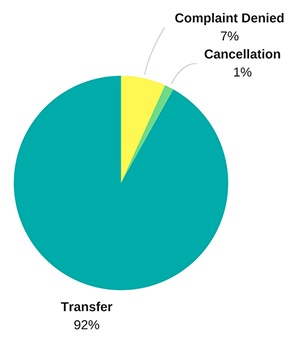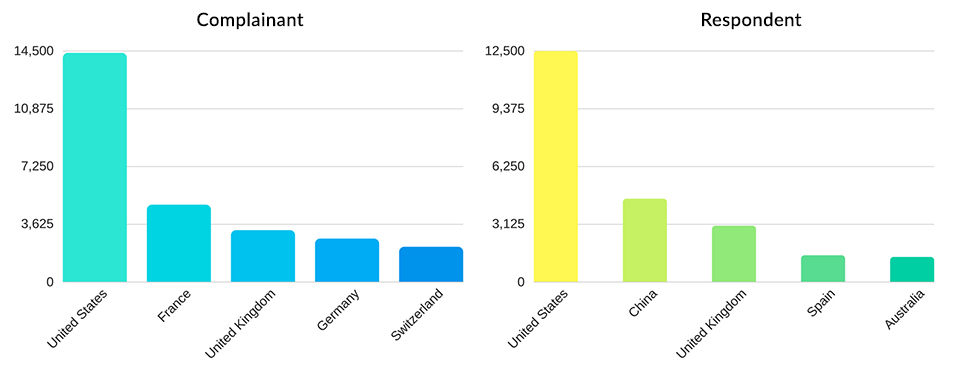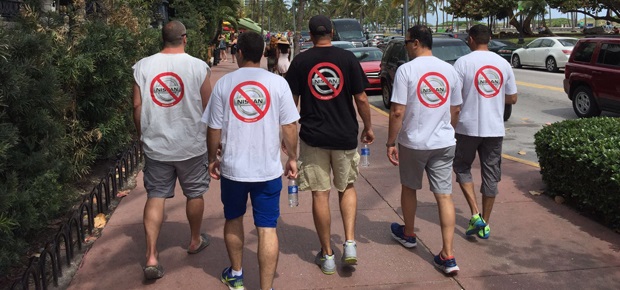The Internet is a large and unregulated space, or it can be if you aren’t closely monitoring your trademark. Thankfully there are policies in place to help companies take over domains that are in the possession of cybersquatters. The domain dispute resolution process provides a time and cost-effective alternative to the hassle of filing a case in court.

Securing your trademark in your home country is great, but it doesn’t come close to protecting you internationally. The line that’s drawn for trademark law becomes a little hazy when dealing with trademark disputes in a global space. There are two courses of action one can take in the domain dispute resolution process: UDRP and URS. The two go hand-in-hand, the main difference being how clear of a case you have against the party infringing on your trademark.
If the domain was clearly registered in bad faith, URS provides a faster and lower-cost option for the most clear-cut cases. All Registrars abide by the domain dispute resolution process, so whatever the outcome the Registrar will respect the decision to cancel, suspend or transfer the domain to the complainant. In 2017, the majority of UDRP/URS cases resulted in the decision that the name is transferred to the party who filed the complaint.
To give you a better understanding of where the action of cybersquatting is taking place, here’s a breakdown of the top 5 countries by the complainant and respondent filing.
Source for the data: WIPO Domain Name Dispute Resolution Statistics
The main element that decides the course of the domain dispute resolution process is if you have a trademark and if the person using the domain with your trademark registered it in bad faith.
When the Domain Dispute Resolution Process Doesn’t Work: Case Study Nissan
Image Source: Nissan.com
Per the Nissan Motors vs. Nissan Computer case it is clear that Nissan Computer who registered the domain nissan.com back in 1994, did not register the domain in bad faith. Nissan Computer has a few parts on his side in this case.
- The respondent’s name is Uzi Nissan.
- His multiple businesses including Nissan Foreign Car, Nissan International, and Nissan Computer Corp were all named and operated back when Nissan motors were still known as DATSUN.
- In 1995 he was approved for the trademark Nissan and his logo from the State of North Carolina.
- In 1996 he registered nissan.net to further grow his business.
This has been an ongoing battle since 1999, 5 years after the respondent registered nissan.com. The domain dispute resolution process is intended to avoid cases like these that cause a substantial financial and time burden and emotional stress on both parties. Nissan Motors, however, did not have a clear-cut case and was unable to go the UDRP and URS route, and after a decade of legal battles in court, it appears Nissan Motors still does not have a case and never will.
A trademark doesn’t give you the right to go around taking domain names from another legitimate business. The domain registration process is very much so first come-first served.
Monitoring Your Digital Assets: Be Proactive
Domain names are assets, crucially important to the very DNA of your brand. No longer is a domain strategy a secondary element. It takes monitoring and enforcement to maintain a successful domain name strategy. Stay ahead of the new TLD launches and monitor you trademark across the web to ensure no one is benefiting from your likeness or diluting your brand reputation with a counterfeit website and products. We are very proud to say 101domain has a 100% success rate for UDRP/URS cases. Our expert account managers are well-versed in the domain dispute resolution process and procedures and can help you find the right course of action to guarantee a positive outcome for the least amount of disruption to your business. Contact us today for a consultation.

